The best times to visit La Concepción Gardens in Malaga are spring and autumn. The wisteria arch is famous.
By Nick Nutter | Updated 5 Oct 2022 | Málaga | Places To Go |
Login to add to YOUR Favourites or Read Later
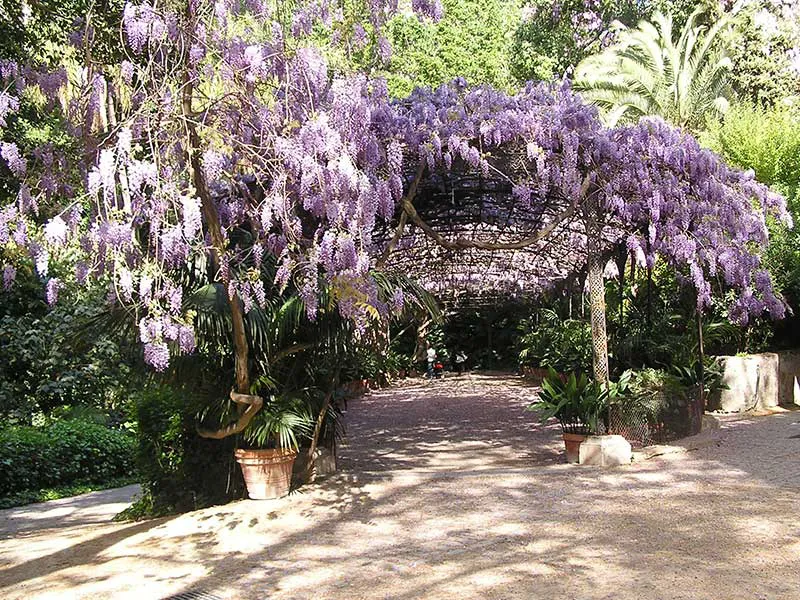

Wisteria arch at La Concepcion Botanical Gardens
In the 19th Century, the Marquis of Casa Loring built a country house and planted the gardens with tropical and subtropical flora from America, Asia, Africa and Oceania. In 1943 it was declared a historical and artistic garden. In 1990 it was purchased by Malaga City Council and opened to the public in 1994. Since then the gardens have been developed, the last portions were opened to the public in 2009. There are routes within the park suitable for everybody. Some are suitable for wheelchairs, some for those who enjoy a short stroll and the forest walk is best undertaken in good shoes or trainers. Altogether there are over 4 kilometres of paths and tracks to explore.
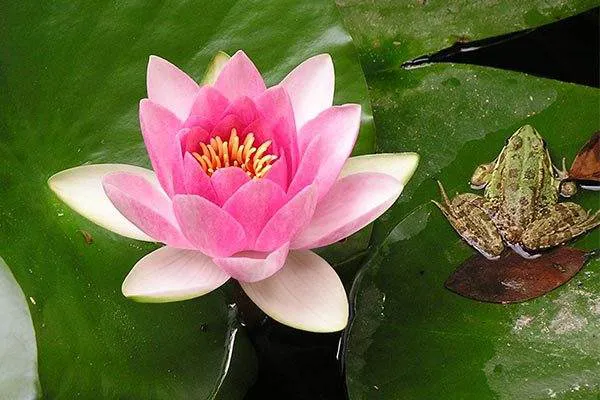
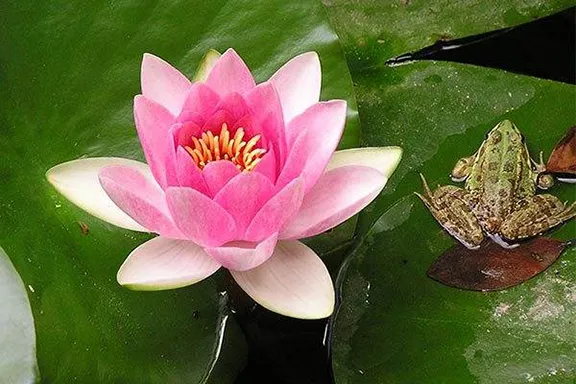
Water Lily and Frog at La Concepcion Botanical Gardens
Visitors will notice, on a hill, a Doric style pavilion. It is built on a mosaic that was found in nearby Cartama. The mosaic depicted the labours of Hercules. The Marquis was an avid collector of Roman artefacts and became famous for his collection that was stored in the pavilion. . Many of the pieces he collected are now in the Malaga Archaeological Museum and one, the Lex Flavia Malacitana, a bronze piece displaying the Roman laws by which Malaga was governed in the year 80 A.D. is in the National Archaeological Museum in Madrid.

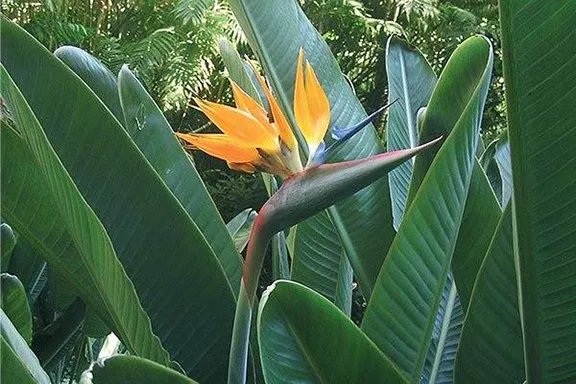
Stelitzia at La Concepcion Botanical Gardens
March and April are particularly good months to visit; the famous Wisteria arch is exuberant with blossom. In late summer, autumn and winter you will see a huge variety of flowering trees, shrubs and plants. Summer is great for the water lilies, including the gigantic Japanese water lily confined to its own pond.
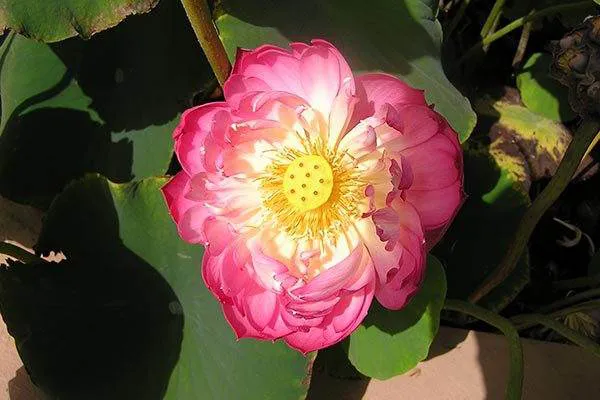

Camelia at La Concepcion Botanical Gardens
Close to the entrance and the Japanese water lily pond is the cafe that serves a selection of snacks and drinks. Most of the gardens are disabled friendly, you would have problems with wheelchairs on the rougher paths towards the top of the gardens.
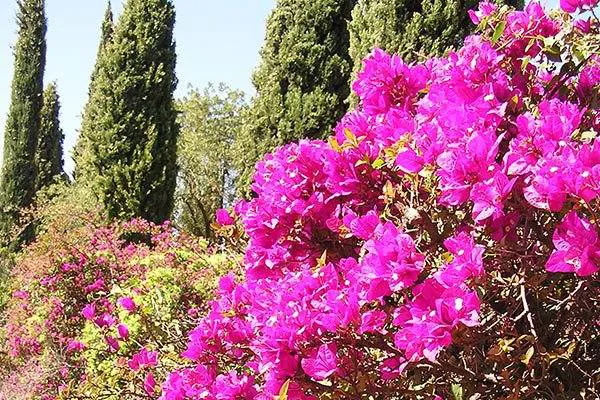

Bougainvilla at La Concepcion Botanical Gardens
In the middle section of the park, a stream has been diverted into a series of pools and streams that cascade down the hill in a natural defile planted with monstera deliciosa, strelitzia, small palms and other plants generally found on a sun-dappled jungle floor. The result is a lush green panorama with occasional bursts of vivid reds and oranges. Rising through them are various species of ficus, many with intricately columned and twisted trunks and exposed roots providing a striking architectural framework.
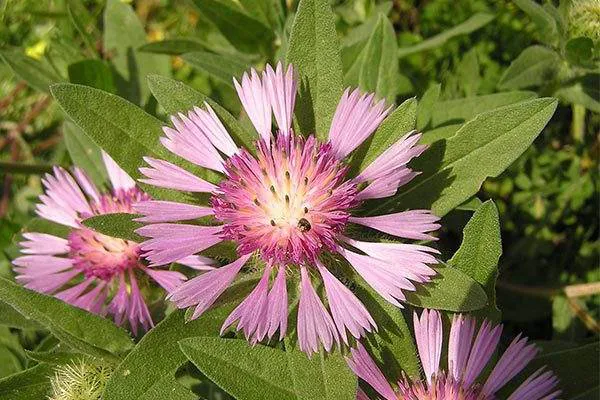

Exotic Flower at La Concepcion Botanical Gardens
Further up the hill, the trees become thinner and you emerge onto a Mediterranean sun-scorched slope with native species such as ipomea and every colour of bindweed and dog rose vying for attention. At the western end of this area cactus from all over the world find a hospitable environment to thrive.
Slightly lower than the cactus garden are the formal gardens. A Roman-style circular pergola stands at one end of a long pool with stately, slender Cyprus trees providing an avenue of view over the whole of Malaga city. The hillside below is ablaze with bougainvillaea and the banks are covered with fragrant blue rosemary and other herbs.
The eastern end of the park is a complete contrast. This area was originally the orchard supplying the estate and there are orange, lemon and pomegranate trees, some nearly 200 years old, still flowering and fruiting.
The remainder of this part is devoted to trees from all over the world. A tall, exotic Erythrina crista-galli from Uruguay has an umbrella-shaped crown covered in orange flowers similar to a lily. The flowers appear before the leaves to attract the first of the new season’s insects. Normally conservative explorers, seeing this tree for the first time, called it the Cockspur Coral Tree in a rare burst of poetic exuberance.
Nearby is an equally exotic Bauhinia from the Chinese Himalayas with large pink flowers similar to a hibiscus but much more delicate and with a very pale green leaf. Not for nothing is it known as the Orchid Tree.
Returning to the centre sections, you can cool off walking in the shade of 10 metre high stands of black bamboo; each stem is an ebony black wand with a tuft of green leaves at the tip. Nearby is the more common golden bamboo that can grow at the rate of 1 centimetre per day.
For adults the gardens are a place of wonder and the nearest most will get to a jungle without donning a pith helmet and taking up a machete. For children it is a magical place, their imaginations filling it with demons and fairies reminiscent of tales told in the nursery, and, who knows, there could easily be a goblin beneath that bridge over the dashing stream in the gloom of the metre wide leaves of the Monsteras rambling up the Ficus trees.
Take a virtual tour of La Concepción Gardens. Opening times and prices.